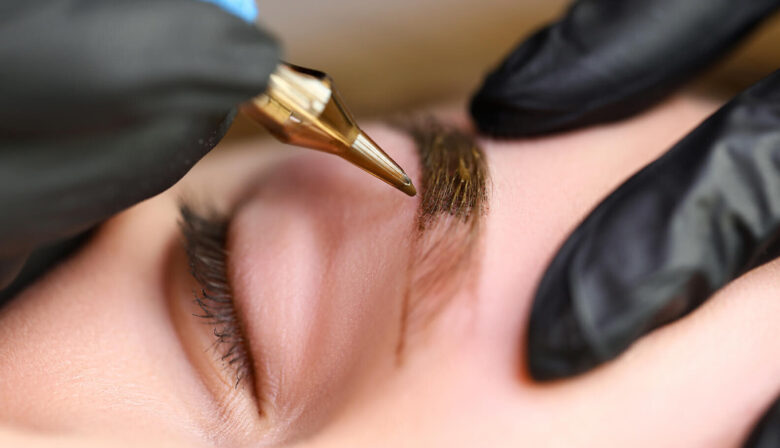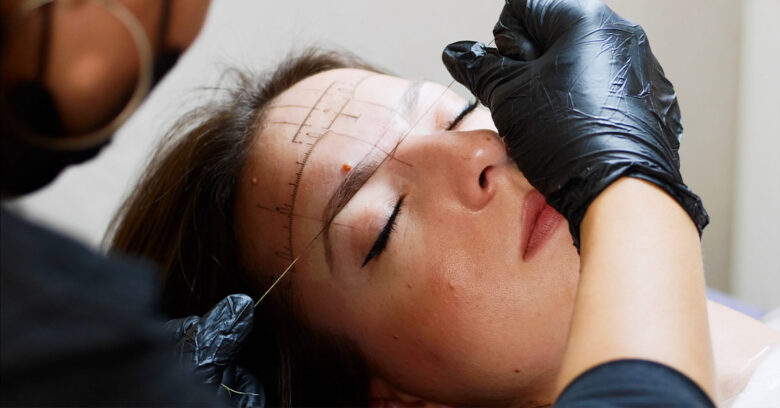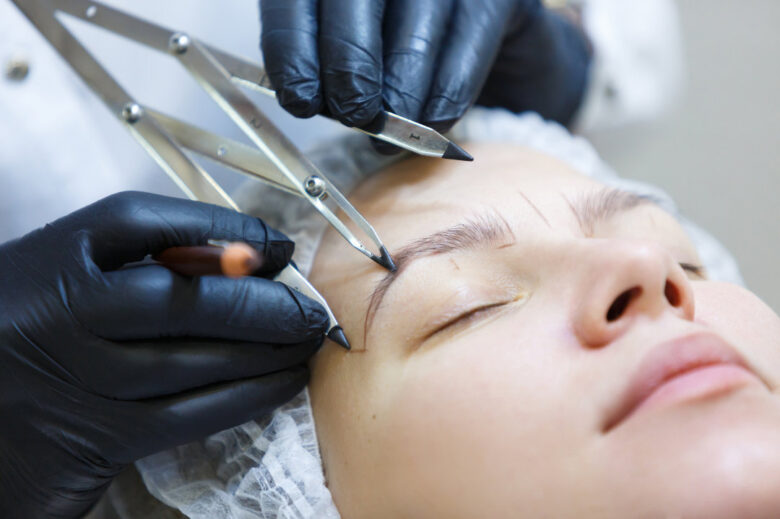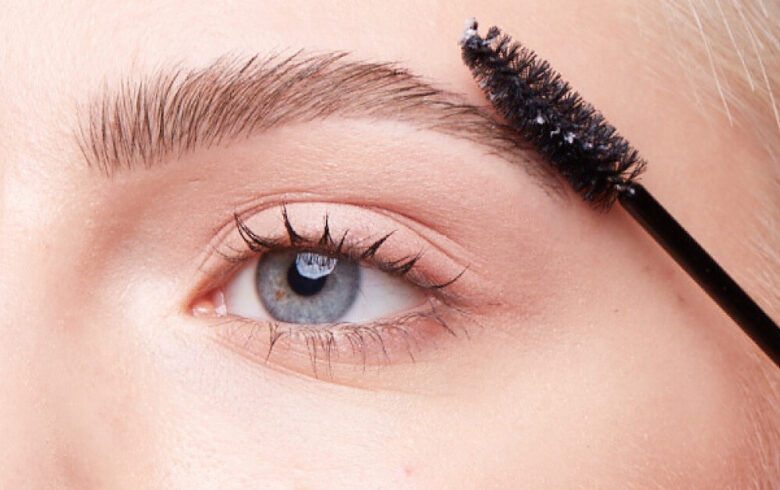As you can guess, permanent makeup is called permanent for a reason. Or does it?
When we talk about lip shading, eyeliner tattooing, and other permanent or semi-permanent makeup treatments, we always assume it’s a one-time deal. However, our skin has the tendency to regenerate on its own, pushing layers of the epidermis higher as it ages. It’s a completely physiological process, and its totally obvious that if there’s ink injected between epidermis layers, it will slowly fade as the skin regenerates. Learn more about this on pmu-annakara.com.
So, there’s a big question people always ask.
Will it fade completely?

Permanent makeup can be roughly called a form of tattooing. Initially, yes, it’s supposed to be permanent according to this comparison. However, there are a few factors that affect how long will your microblading last.;
- The depth of ink injection. With regular tattoos, the ink gets injected deeper, somewhere between the epidermis and derma. With microblading and especially other PMU techniques, your artist injects the pigment between superficial layers of the epidermis. This difference is significant, as the deeply injected ink won’t ever fade away ‒ instead, it will change its color to a bluish tone. This is also the case for microblading or other techniques done with poor-quality pigment ‒ that’s why there is the need for cover-up appointments for both types of treatments.
- The quality of the pigment. As the pigment for permanent makeup gets to be inserted in the upper layers of the skin, it tends to fade away in a few months (closer to a year, actually). Moreover, pigments rich in iron get oxidized pretty quickly, which is the reason for color change. Instead of being perfectly black, the pigment underneath the thin layers of skin (which also give it a tint) gets blueish. In the case of brown shades, this kind of pigment can turn into shades of red. This is why you need cover-up appointments and high-quality ink.
As you can see, microblading can fade away both in brightness and color saturation as well as tint. With that in mind, refreshing it once in a while is a clever idea.
What does semi-permanent mean, then?

This is exactly what microblading is ‒ its a semi-permanent tattooing treatment. It stays with you for a long ‒ for some people, good microblading can last up to a year after the touch-up procedure.;
Another factor that steps in is the individual features of your skin. Every skin is unique ‒ there are oily types, quickly aging types, and dry skin. All of it including your age and the metabolic features of your skin impacts the longevity of your perfect permanent makeup.
When you’re young and your skin regenerates really fast (with a cell cycle lasting for around 28 days), the healing process after the initial procedure will be fast, but also the pigment will fade away faster ‒ in half a year or so after the touch-up.
And as for touch-up procedures, you definitely need those, as your skin pushes out approximately 30-40% of the pigment injected during the initial procedure. This is a completely natural process as the skin tries to shed pigment particles. After the touch-up procedure, your microblading can be considered fully done.
Here’s another question that gets asked a lot: can I do anything to prolong the life of my microblading?.
Well, the good news is ‒ you can! All you have to do is fully comply with the aftercare rules:

- Dont take the scabbing off on your own. Scabbing is a completely natural part of the healing process ‒ let these flakes fall off on their own. If you intervene, the pigment will be distributed unevenly and will fade away sooner.
- Book your touch-up appointment. The healing process loses around 30-40% of the pigment, which is completely normal given your skin is a healthy organ. You need a touch-up in order to reapply pigment where it faded and fix it in place for longer.
- Avoid danger factors. Saunas, pools ‒ all of these in the first 7 days after the procedure create a higher risk of getting your skin infected. When there’s an infection, the pigment will smudge and fade away quicker because white blood cells will be activated in huge amounts.
And just like that, you can expect your permanent (or, well, semi-permanent) makeup to last up to a year. Remember that every skin is unique, and for some people, the fading process will be longer, and for some ‒ shorter. Your age, type of skin, and lifestyle are the main factors affecting the life of your microblading.

Type used of pigment – The composition of the pigment largely depends on the rate of fading. Some pigments are smaller, such as B. carbon-based pigments. However, this is only part of the puzzle. I’ve seen a lot of carbon eyeliners that have been in space for over twenty years. This is due to the pigment implantation technique. Generally speaking, the lighter the color, the easier it is to fade completely.
So, if you’re a blonde, you’ll probably need to trim your eyebrows every few years, since us brunettes always turn blue after a few years. It’s just animal nature. And as for corrective treatments, you definitely need them because your skin pushes out about 30-40 percent of the pigment injected during the initial treatment.
This is a completely natural process, as the skin tries to get rid of pigment particles. After the touch-up procedure, your microblading can be considered completely complete. How deep the master implants is the most important factor affecting how well permanent makeup wears off.
If the artist has a light hand, it can fade much more than if the artist has a heavy hand. As you can see, microblading can significantly lose both the brightness and color saturation, as well as the shade. With that in mind, it’s a smart idea to update it from time to time.
This is exactly what microblading is ‒ its a semi-permanent tattooing treatment. It stays with you for a long ‒ for some people, good microblading can last up to a year after the touch-up procedure.


